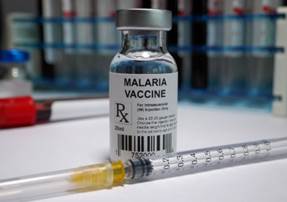Description

Disclaimer: Copyright infringement not intended.
Context
- A promising malaria vaccine – R21 was up to 80% effective at preventing the disease in young children who received a booster shot one year after their initial dose. This exceeds a World Health Organization (WHO) target of 75% efficacy.
Malaria and its burden
- Globally, about 200 million people per year, in recent years, have contracted malaria.
- According to the World Malaria Report 2019, India represents 3% of the global malaria burden.
Malaria Vaccine
- Developing a potent malaria vaccine has been a decades-long struggle. The only vaccine in use, a multidose shot called RTS,S, is up to 50% effective in the first year or so. That immunity wanes to about 28% over time.
- The vaccine, also comes with a troubling side effect: about 5% of the children in clinical trials had febrile seizures. The World Health Organization began using it in Ghana, Malawi, and Kenya.

R21 and its significance
- The vaccine, called R21, could be an effective weapon in the fight against malaria, which is one of the biggest killers of children globally.
- A more effective R21 is the first malaria vaccine to meet the WHO’s goal, set in 2015, of 75% efficacy.
- More than 100 malaria vaccines have been tested over the years. None have had such high efficacy.
- The key to R21’s impact on malaria might lie not just in its effectiveness, but also in its availability. Collaborators have forged an agreement with the Serum Institute of India, based in Pune, to produce 200 million doses of the vaccine per year once the WHO gives the green light.
India’s efforts in tackling Malaria
- According to The World Malaria Report (WMR) 2020 India is the only high endemic country, which has reported a decline of 17.6% in 2019 as compared to 2018.
- India has made remarkable progress during the recent years in reducing the malaria incidence.
- In May 2015, the World Health Assembly endorsed the Global Technical Strategy (GTS) for Malaria Elimination2016-2030, which lays down clear global goals, milestones and targets till 2030.
- In accordance with the GTS, the Government of India launched the National Framework for Malaria Elimination 2016-2030 in February 2016and the National Strategic Plan for Malaria Elimination 2017-2022 in July 2017 with WHO support.
- India has a vision of a malaria free country by 2027and elimination by 2030.
- The WHO has also identified 25 countries with the potential to eradicate malaria by 2025 under its ‘E-2025 Initiative’.
The Disease
- Malaria is caused by single-celled microorganisms of the Plasmodium group parasites.
- The disease is most commonly spread by an infected female Anopheles mosquito.
- The mosquito bite introduces the parasites from the mosquito's saliva into a person's blood.
- The parasites travel to the liver where they mature and reproduce.
- Five species of Plasmodium can infect and be spread by humans.
- Most deaths are caused by falciparum, whereas P. vivax, P. ovale, and P. malariaegenerally cause a milder form of malaria.
- The species knowlesirarely causes disease in humans.
- Malaria is predominantly found in the tropical and subtropical areas of Africa, South America as well as Asia.
- Symptoms:fever, tiredness, vomiting, and headaches. In severe cases, it can cause yellow skin, seizures, coma, or death.
- Malaria is preventable as well as curable.
- Vaccine:RTS, vaccine.
Malaria Free Status
- Countries that have achieved at least three consecutive years of zero indigenous cases can apply for WHO certification of their malaria-free status.
Malaria Free Countries
- China is the first country in the WHO Western Pacific Regionto be awarded a malaria-free certification in more than 3 decades.
- Globally, 40 countries and territories have been granted a malaria-free certification from WHO.
- Recent Declarations:El Salvador (2021), Algeria (2019), Argentina (2019), Paraguay (2018) and Uzbekistan (2018).
China’s Malaria Elimination Strategy in brief
1-3-7 Strategy: The strategy refers to:
- A one-day deadline to report a malaria diagnosis,
- Confirming a case and determining the spread by the third day, and
- Measures taken to stop the spread by the seventh day, along with continued surveillance in high-risk areas.
https://www.nature.com/articles/d41586-022-02902-6











